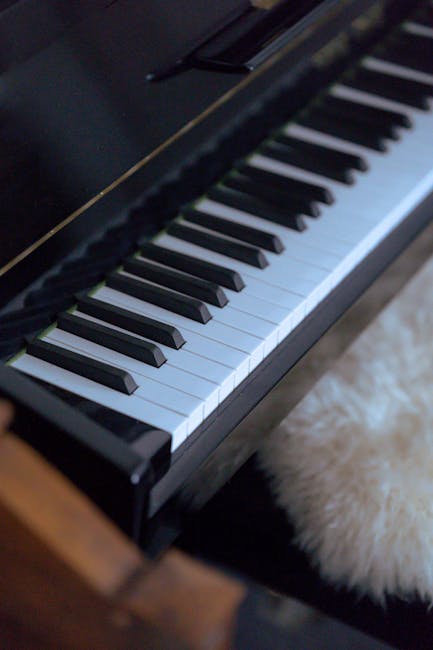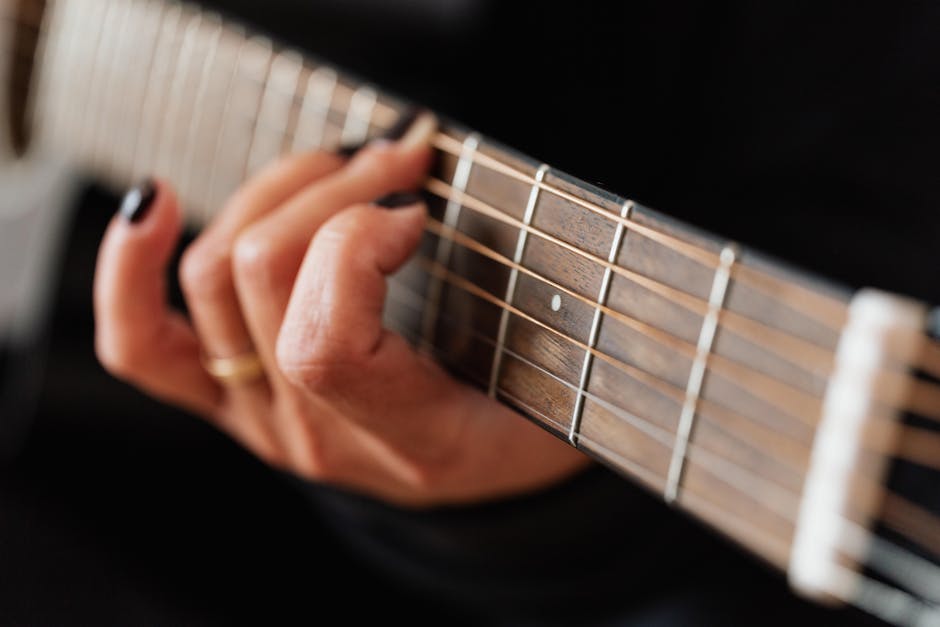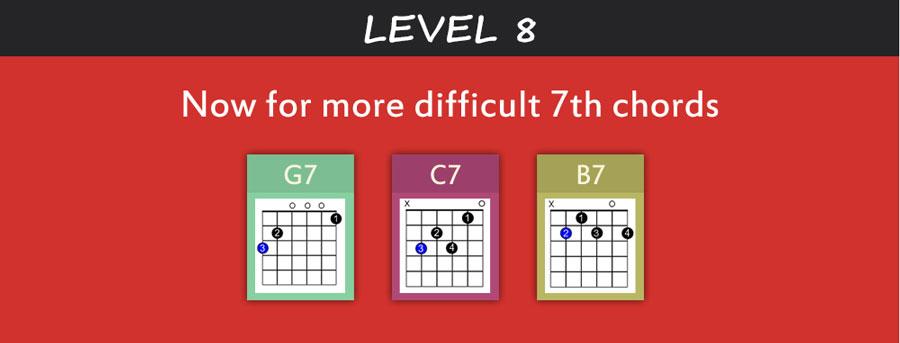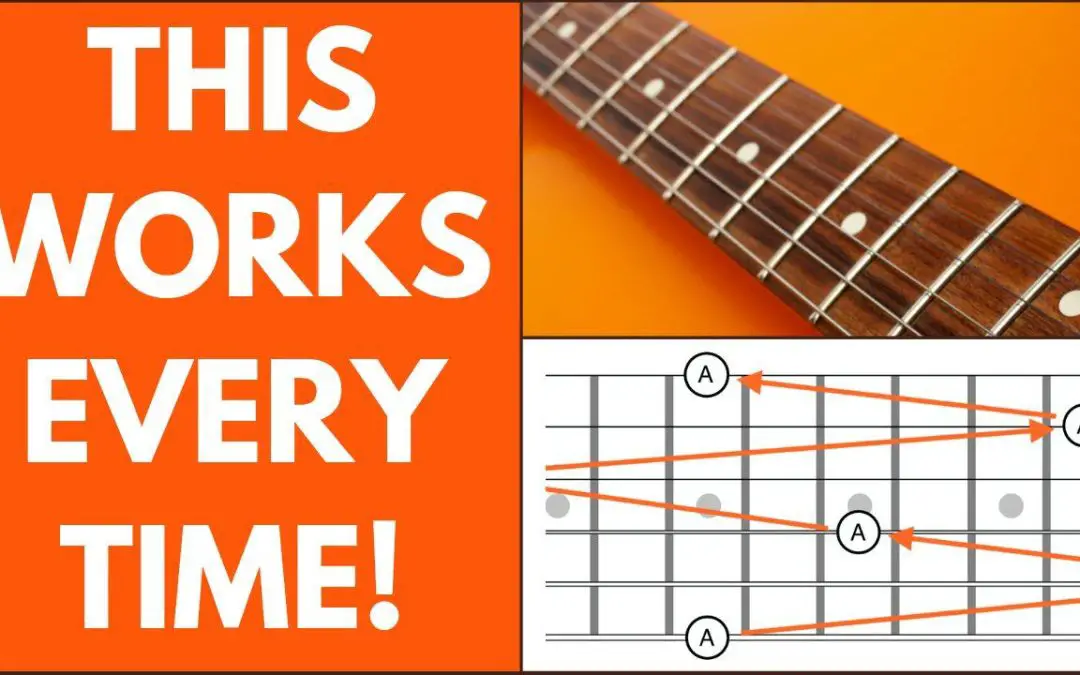So you’ve mastered the art of strumming a few chords on your acoustic guitar, but now you’re itching to take your skills to the next level. Fear not, aspiring rock stars and folk heroes! It’s time to dive headfirst into the wonderful world of chord vocabulary. Get ready to build up your repertoire of finger-twisting, string-bending goodness as we take a hilarious journey through the essential building blocks of guitar greatness. It’s time to tune up, rock on, and master those basics like a boss!
Contents
- 1 Understanding Chord Structures and Terminology
- 2 The Major and Minor Chords: Foundation of Guitar Playing
- 3 Expanding Beyond the Basics: Seventh Chords and Suspended Chords
- 4 Techniques for Smooth Chord Transitions
- 5 Practicing Chord Variations for Enhanced Musical Expression
- 6 Incorporating Barre Chords into Your Repertoire for Versatility
- 7 Effective Practice Strategies for Building a Robust Chord Vocabulary
- 8 FAQs
- 9 Strumming Along
Understanding Chord Structures and Terminology
So, you want to understand chord structures and terminology, huh? Well, get ready to dive into the wonderful world of music theory! First off, let’s talk about the basic building blocks of chords: the root, the third, and the fifth. These three notes come together to create that harmonious sound that makes your heart sing (or your ears cringe, depending on your musical skill).
Now, let’s break down some chord terminology that might sound like a foreign language to you. You’ve got your major chords, your minor chords, your diminished chords, your augmented chords…the list goes on and on. It’s like a musical buffet of options, with each chord bringing its own unique flavor to the table.
It’s important to understand how chord structures work so you can spice up your musical compositions and impress your friends with your fancy music knowledge. Plus, knowing your way around chord terminology can really come in handy when you’re trying to communicate with other musicians. So, take the time to study up and practice until you’re a chord structure master!
The Major and Minor Chords: Foundation of Guitar Playing
Let’s talk about the major and minor chords, shall we? They are the bread and butter of every beginner guitarist trying to serenade their crush or impress their friends at a campfire. These two simple chords form the foundation of guitar playing, and mastering them is like unlocking the secret code to musical greatness.
Major chords are like the popular kids in high school - they are happy, cheerful, and always the life of the party. You can spot them from a mile away with their bright and shiny sound that just screams “sing along with me!” Minor chords, on the other hand, are the brooding emo kids sulking in the corner. They have a more melancholic and introspective vibe that can make even the toughest of cowboys shed a tear.
When you strum a major chord, you can’t help but feel like you’re on top of the world, ready to conquer anything that comes your way. But when you switch to a minor chord, suddenly you’re transported to a dimly lit coffee shop, contemplating the meaning of life over a latte. It’s like a musical rollercoaster that takes you from the highest highs to the lowest lows.
So, whether you’re feeling like a rockstar or a poet, remember that major and minor chords are your trusty companions on this musical journey. With a little practice and a lot of heart, you’ll soon be strumming your way to guitar glory, one chord at a time.

Expanding Beyond the Basics: Seventh Chords and Suspended Chords
So you’ve mastered the basic chords and you’re ready to take your guitar playing to the next level – that’s where seventh chords and suspended chords come in! These funky and jazzy chords will add some flavor to your playing and impress your friends and family.
Seventh chords add that extra bit of spice to your chord progressions. Whether it’s a major seventh, dominant seventh, or minor seventh, these chords will give your music that undeniable edge. They’re like the extra sprinkle of paprika on top of your already delicious musical dish.
And let’s not forget about suspended chords – the rebels of the chord world. These chords have a way of creating tension and release that will leave your listeners on the edge of their seats. Whether it’s a suspended second or a suspended fourth, these chords will make your music rise and fall in all the right places.
So go ahead, experiment with seventh and suspended chords in your playing. Mix them in with your basic chords and watch as your music takes on a whole new dimension. Remember, music is all about pushing boundaries and trying new things – so don’t be afraid to get a little adventurous with your chords!

Techniques for Smooth Chord Transitions
Transitioning smoothly between chords can be a real struggle for many beginner guitarists, but fear not! With a little practice and some key techniques, you’ll be switching chords like a pro in no time.
First off, make sure you’re positioning your fingers correctly on the fretboard. **Proper finger placement** is key to making those transitions seamless. Take the time to really focus on where each finger needs to go for each chord – it may seem tedious at first, but it’ll pay off in the long run.
Another useful technique is **the pivot method**. Instead of lifting all your fingers off the fretboard when switching chords, try keeping one finger in place as an anchor and pivoting around it. This can help you make faster and smoother transitions between chords, especially when you’re dealing with complex chord progressions.
Lastly, don’t forget to **practice, practice, practice**. The more you work on your chord transitions, the better you’ll get at them. Set aside some time each day to focus exclusively on switching between chords, and you’ll be amazed at how quickly you improve. Remember, Rome wasn’t built in a day – and neither were perfect chord transitions!

Practicing Chord Variations for Enhanced Musical Expression
Ever feel like your guitar playing is just missing that extra spark? Well, look no further than chord variations! They are like the spice rack of music – adding flavor, depth, and complexity to your sound. By practicing different chord shapes and voicings, you can take your musical expression to a whole new level.
One fun way to explore chord variations is to experiment with inversions. Instead of playing a basic C major chord in the open position, try playing it higher up the neck using a barre chord shape. This not only gives you a different sound but also allows you to play more smoothly between chords. Who knew that moving your fingers around a bit could make such a difference?
Another way to spice up your playing is by adding extensions to your chords. By throwing in some 7ths, 9ths, or even 13ths, you can create a richer, more sophisticated sound. It’s like adding extra toppings to your pizza – sure, it’s delicious on its own, but why not take it to the next level?
So next time you pick up your guitar, don’t be afraid to play around with different chord variations. You never know what kind of musical magic you might stumble upon. Remember, music is all about expression, so why not enhance it with some fancy chord shapes?
Incorporating Barre Chords into Your Repertoire for Versatility
Barre chords can be a real pain in the neck—or rather, the hand. But mastering these versatile chords can open up a whole new world of possibilities for your playing. Here are some tips on how to incorporate barre chords into your repertoire:
Experiment with Different Voicings: Don’t just stick to the basic barre chord shapes. Try moving them up and down the fretboard to create new and interesting voicings. You’ll be amazed at how different the same chord can sound just by changing its position.
Practice Proper Technique: The key to mastering barre chords is proper technique. Make sure your thumb is positioned correctly on the back of the neck and use the strength of your arm—not just your fingers—to press down on the strings. It may feel awkward at first, but with practice, it will become second nature.
Use Barre Chords in Different Genres: Barre chords aren’t just for rock and pop—they can be used in virtually any genre of music. Try incorporating them into jazz standards, country ballads, or even funk tunes. The more you experiment with different styles, the more versatile you’ll become as a player.
Effective Practice Strategies for Building a Robust Chord Vocabulary
When it comes to building a robust chord vocabulary, practice makes perfect! You don’t want to be the musician at the jam session who can only play basic open chords while everyone else is throwing in fancy diminished 7ths and augmented 9ths. To avoid that embarrassment, here are some effective practice strategies to level up your chord game:
- **Learn a new chord every day:** Pick a chord you’re not familiar with and challenge yourself to incorporate it into your practice routine. Whether it’s a complex jazz chord or a funky R&B voicing, expanding your chord vocabulary will make your playing more interesting and dynamic.
- **Experiment with different inversions:** Don’t just stick to the standard root position chords. Play around with inversions by moving the notes of the chord up and down the fretboard. This will not only improve your fretboard knowledge but also allow you to play the same chord in multiple ways.
- **Practice transitioning between chords:** Smooth chord changes are key to sounding professional. Instead of random chord changes, create chord progressions and focus on transitioning between them seamlessly. This will train your muscle memory and improve your overall playing.
Remember, building a robust chord vocabulary takes time and dedication. Don’t get discouraged if you struggle with certain chords or progressions. Keep practicing, stay consistent, and soon enough, you’ll be the chord master everyone turns to for musical inspiration!
FAQs
Why is it important to build chord vocabulary on acoustic guitar?
Well, if you want to impress that cute singer-songwriter at the open mic night, you better have more than just three chords up your sleeve. Building chord vocabulary not only expands your musical repertoire but also helps you become a more versatile and confident player.
How can I start building my chord vocabulary?
Think of it like building a house – start with a strong foundation. Master the basic open chords like G, C, D, E, and A. These are the bread and butter of any acoustic guitarist. Once you’ve got those down, you can start adding in more complex chords like sus4, maj7, and dim7.
How can I practice and memorize all these different chords?
Repetition is key, my friend. Set aside some dedicated practice time each day to work on your chords. Make flashcards with chord diagrams on one side and the chord name on the other. Quiz yourself regularly and before you know it, you’ll have a chord vocabulary to rival even the most seasoned guitarists.
Are there any shortcuts or hacks for mastering chords more quickly?
Absolutely! Look for chord progression cheat sheets online that group chords together in common song patterns. This will not only help you memorize chords faster but also give you a better understanding of how chords work together in a musical context.
What should I do if I get stuck or frustrated while building my chord vocabulary?
Don’t fret (pun intended)! Take a break, grab a coffee, and come back to it with a fresh perspective. Learning new chords can be challenging, but remember, every great guitarist started out as a beginner. Keep practicing, stay patient, and soon enough, you’ll be strumming away like a pro.
Strumming Along
And there you have it, folks! With these chord-building tips under your belt, you’ll be well on your way to becoming a strumming sensation on the acoustic guitar. So grab your guitar, practice those chords, and get ready to serenade your friends and family with your newfound chord vocabulary. Remember, even the pros started off mastering the basics! Happy strumming! 🎸🎶



